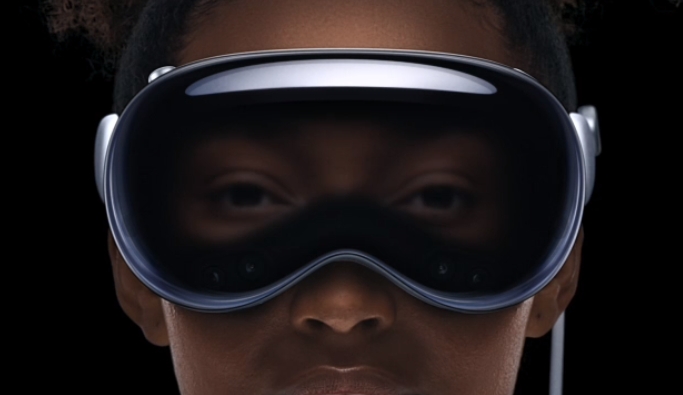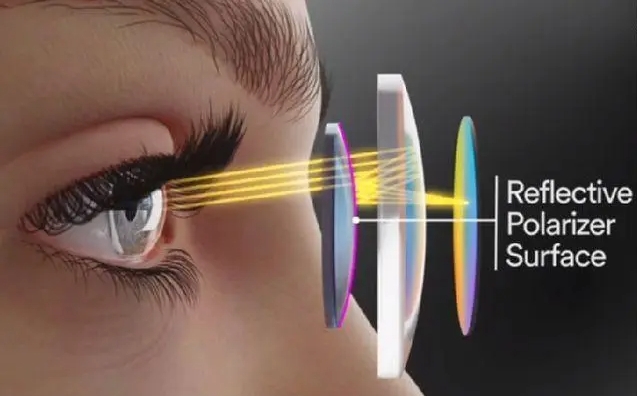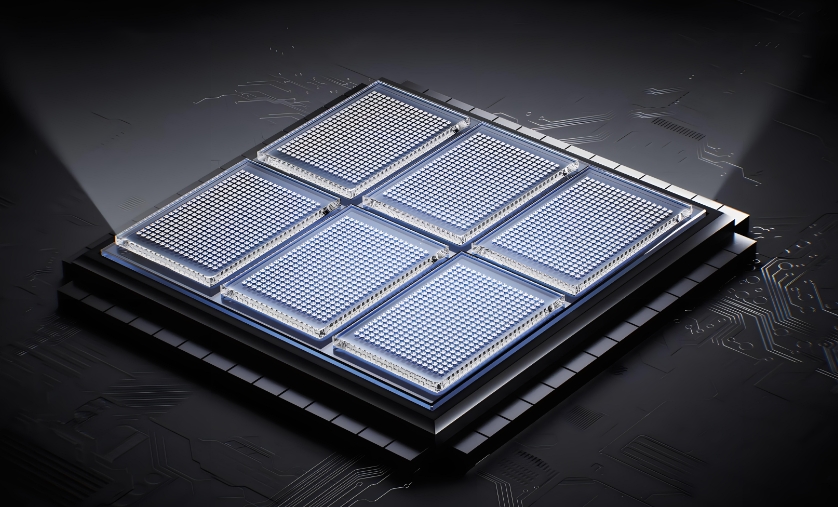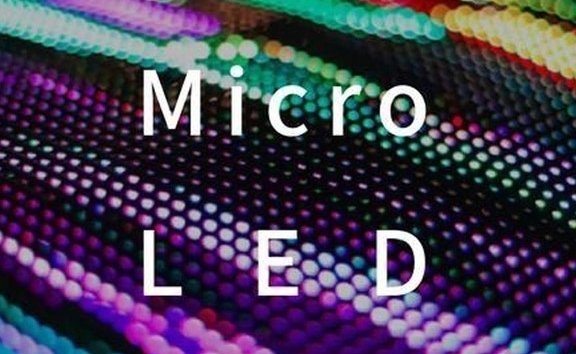Techlion Display
LCD Module Manufacturer
Who is the king of “near-eye display”?
On February 2nd, local time, VisionPro made its debut in the United States, thrusting Apple once again into the global spotlight. Numerous reviewers have bestowed upon VisionPro the lofty title of “the best-known head-mounted display in the world,” but at the same time, they’ve also pointed out its drawbacks, including “insufficient color fidelity,” “poor display quality,” and the possibility of “blurry video perspective.”
Realizing the significance of the display screen, Apple willingly invested about half of the cost of approximately $3,499 USD (roughly equivalent to 25,000 RMB) for VisionPro into two 1.3-inch silicon-based OLED display screens.

However, at present, other head-mounted display device manufacturers have chosen different technological routes from VisionPro. Meta Quest3 is equipped with Fast-LCD dual display screens with a resolution of 2064×2208, Sony Playstation VR2 uses OLED screens, Thunderbird AR Glasses X2 utilizes binocular full-color Micro-LED + waveguide technology, and RokidMAX has opted for the Micro-LED technology route. Among various VR/AR head-mounted devices, the display screen is the most critical component and serves as the first barrier to entry into the era of spatial computing. “Display technology is one of the most crucial factors and also the narrowest bottleneck,” noted Dr. Dai Jingwen, Chief Technology Officer of Sparkle Technology, to a reporter from China Electronics Daily, emphasizing the fundamental role of optical issues in driving the development of the virtual reality industry.
Contents
Will Fast-LCD Dominate the Market?
Currently, various AR/VR head-mounted devices on the market utilize a variety of near-eye display technologies, including Fast-LCD, Micro-LED, silicon-based OLED, LCOS (Liquid Crystal on Silicon), OLED, DLP (Digital Light Processing), and LBS (Laser Beam Scanning).
“Currently, the main display technologies are Fast-LCD, followed by OLED and silicon-based OLED, in addition to Micro-LED.” Dong Min, Secretary-General of the China Electronic Imaging Industry Association, told China Electronics Daily. Silicon-based OLED and Micro-LED are most suitable for XR device displays. AR devices are often used outdoors, and the advantages of Micro-LED include high brightness, high resolution, and long lifespan. Unlike organic OLEDs, inorganic LEDs are relatively stable and have higher resistance to moisture and oxygen.

In fact, VR devices have long been plagued by the “screen door effect.” Due to the smaller sub-pixel pitch of Fast-LCD screens, they can effectively alleviate the screen door effect. Moreover, the improved Fast-LCD technology utilizes new liquid crystal materials and driving technologies, with a refresh rate of up to 90Hz, and has the advantage of high yield and stable production capacity.
Additionally, with the addition of MiniLED backlighting, the display effect of Fast-LCD has been significantly improved. Compared to traditional backlighting, MiniLED backlighting can significantly increase the overall brightness of the display screen, effectively reduce the OD distance, and decrease the overall thickness of the device. Furthermore, when combined with a refined Local Dimming partition scheme, Fast-LCD can achieve higher contrast ratios.

“In the VR field, OLED screens once dominated, but after the advent of Fast-LCD, the cost decreased significantly compared to OLED, so Fast-LCD quickly achieved large-scale application in VR devices,” said Dr. Dai Jingwen to the reporter.
According to research data from the market research firm Sigmaintell, the global shipment volume of display panels for XR devices was approximately 11.77 million units in 2022, with Fast-LCD accounting for as high as 94%, and silicon-based OLED accounting for approximately 4%.
Avoiding Silicon-based OLED from Becoming a Backup
Silicon-based OLEDs use a CMOS substrate, which can achieve pixel densities (of about 3000 PPI and above). It has advantages such as stable performance, long lifespan, low power consumption, high pixel density, and fast response time.
Of particular importance is that the overall weight of the silicon-based OLED screen is one-tenth of that of LCD, which can significantly reduce the weight of VR devices. However, its manufacturing process is not mature enough, with a low yield rate and high production costs.
Since silicon-based OLED is the result of the close integration of CMOS and OLED technologies—a highly integrated combination of inorganic semiconductor materials and organic semiconductor materials—the process technology requirements are extremely stringent, which is also the direct reason for its limited production capacity and high cost.
Previously, in order to bring users “immersive realism,” Apple has raised higher requirements for MR display panel suppliers—raising the brightness of silicon-based OLED from the original 2800 PPI to 3500 PPI. The increase in display requirements has once again raised the already high manufacturing costs. From a comprehensive cost-effectiveness perspective, silicon-based OLED is not an ideal technical solution.
Will Micro-LED be a Potential Stock?
Micro-LED is often referred to as the “ultimate display technology,” and this holds true in the field of near-eye displays as well. For example, it outperforms silicon-based OLED in pixel size, luminous efficiency, brightness, and other characteristics. However, its biggest problem lies in its immature technology, difficulty in achieving full colorization, and high cost.
“Micro-LED is still in its early stages of development, and currently, only single color filters can be used. In contrast, silicon-based OLED technology can achieve full color, so silicon-based OLED has the advantage in AR/VR device applications,” said Chen Jun, Deputy General Manager and Chief Analyst of Sigmaintell, to China Electronics Daily, pointing out that the Micro-LED scheme is superior to silicon-based OLED in most specifications such as contrast ratio, power consumption, response rate, and lifespan. Therefore, even after its technology breakthrough, the Micro-LED scheme will still be a more optimal display solution choice.

In fact, global tech giants such as Apple, Samsung, and Microsoft have high hopes for Micro-LED. Over the past decade, Apple has invested at least $1 billion in research and development of Micro-LED-related technologies and has achieved a series of results.
Samsung Display has begun developing LEDoS technology for AR devices since 2023, and has revealed that the Micro-LED chip size can be achieved at the level of several micrometers; Microsoft applied for a new patent last year aimed at developing a Micro-LED display solution to enhance the VR/AR/MR experience.
With Apple’s release of VisionPro, which uses silicon-based OLED screens, the future market share of silicon-based OLED displays will rapidly increase, and Micro-LED also has the potential to gain a market share after 2024.
Which is better or worse depends on the market choice?
“A variety of optical solutions are not the so-called advantages and disadvantages, or it depends on everyone’s choice.” Dai Jingwen told reporters.
In the arena of near-eye display, initially the more cost-effective LCD dominated, OLED had also come later, followed by an upgraded version of Fast-LCD gradually in the field of VR large-scale applications. Silicon-based OLED was Apple’s favorite overnight success, but Micro-LED has been pinned high hopes, the future is promising.
In the evolution of near-eye display technology, which near-eye display technology can become the ultimate winner, in fact, there is no definitive ultimate answer.
Obviously, at the same time to meet the “large field of view, high resolution, low power consumption, high brightness, small size, light weight” and other elements in one of the display program does not exist. These performance indicators can not be all ticked, manufacturers can only choose the most important ones. Apple, for example, despite its long-term bet on the more obvious advantages of Micro-LED, but the current maturity of the technology is not enough, and silicon-based OLED already meets the needs of the initial VisionPro, on the contrary, Micro-LED’s advantage of high brightness used in the class of VR products seems to be a waste. “For manufacturers in the industry, especially terminal manufacturers, the most important thing is to start from the demand side, from the product characteristics, according to the application scenario and the pursuit of performance to make a choice.” Dai Jingwen emphasized.
